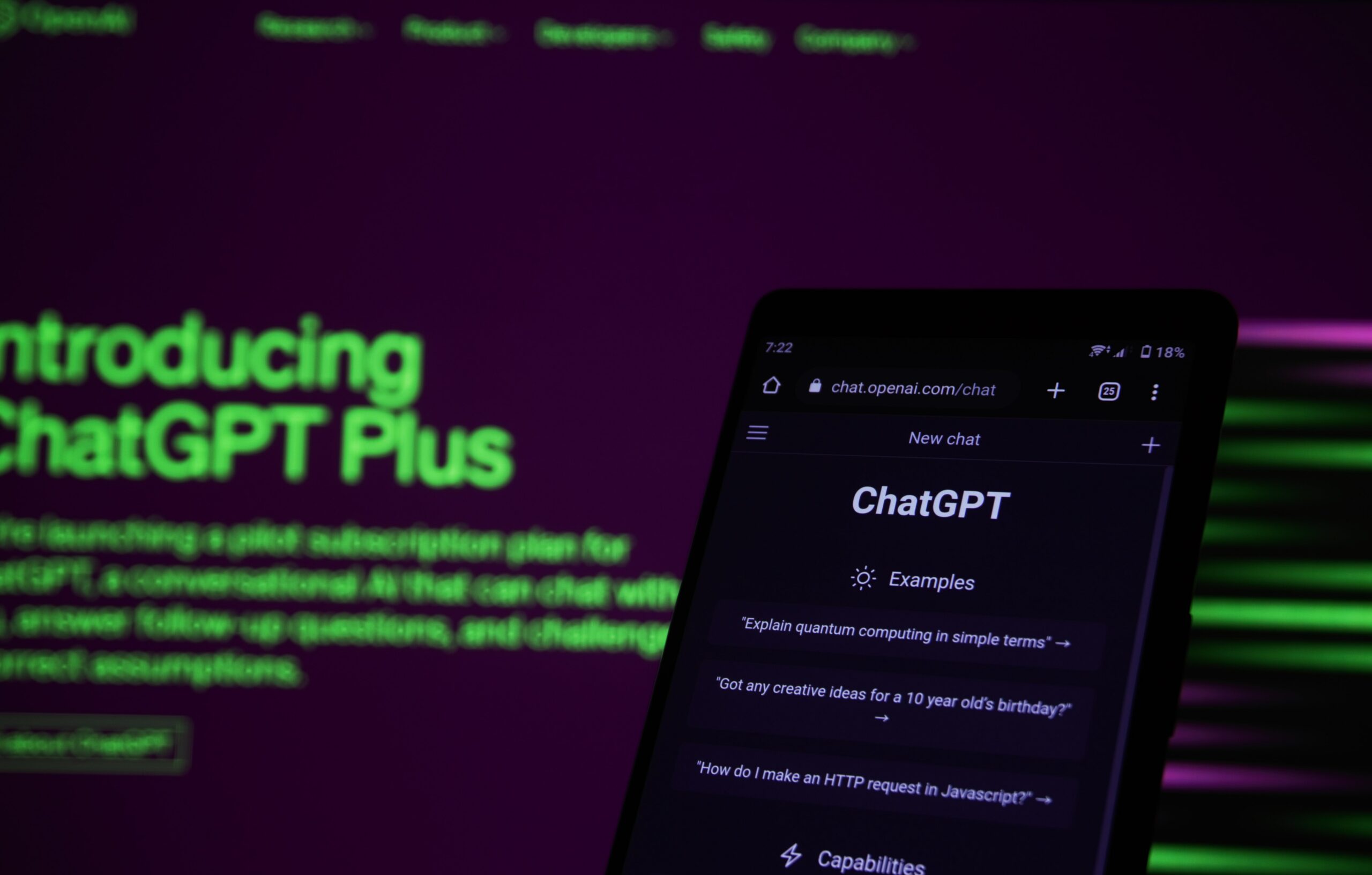It seems like we are witnessing a new quantum leap of technological advancement, with Generative AI taking the world by storm earlier this year. Generative AI (GenAI) has emerged as a powerful tool that combines artificial intelligence with creativity, empowering machines to generate original content, such as images, music, and even text, that imitates human-like creativity from structured and unstructured data. Since ClearML has thrown its hat into the ring with the introduction of ClearGPT.ai in May, we want to lay the foundation for organizations just getting started. In this blog post, we’ll talk about what GenAI is, how it works, why it’s needed, its benefits, and why it matters.
WHAT IS GEN AI?
Generative AI, also known as Generative Artificial Intelligence, refers to a branch of artificial intelligence that focuses on creating systems capable of producing new and original content. Unlike traditional AI models that rely on pre-existing data, generative AI employs techniques such as deep learning and neural networks to learn patterns and characteristics from existing data and produce novel outputs.
APPLICATIONS & BUSINESS USE CASES
Generative AI finds applications across various domains and industries within the enterprise, for example:
Content Creation: Generative AI is widely used in creative fields such as marketing, art, music, and design. It can autonomously generate unique pieces of artwork, compose music, and design aesthetically pleasing visuals as well as generate marketing blogs, articles, advertising copy, and even thought leadership content.
Product Design and Prototyping: By leveraging Generative AI, product designers can more easily leverage information at hand to generate multiple design variations based on specified parameters. This helps streamline the product design process, enabling rapid prototyping and iteration.
Data Augmentation: Generative AI can be used to create synthetic data that resembles real-world data. This is particularly valuable in scenarios where training machine learning models require large datasets which may be difficult or expensive to procure.
Virtual Reality and Gaming: Generative AI plays a significant role in creating immersive virtual worlds and generating lifelike characters and environments within video games and virtual reality experiences.
Natural Language Processing: In the realm of natural language processing, Generative AI can generate coherent and contextually relevant text, aiding in tasks such as language translation, chatbots, and content generation.
The use of Generative AI extends well beyond these examples, with organizations across industries exploring numerous unique use cases and their potential to unlock innovation and enhance business productivity.
GENERATIVE AI BUSINESS BENEFITS
Generative AI plays a crucial role in addressing the growing need for automation and efficiency within enterprises, such as in the use case of marketing and advertising where traditional content creation and design processes can be time-consuming and resource-intensive. Generative AI offers a solution by automating repetitive tasks and providing quick and accurate outputs. This enables enterprises to streamline their operations, allocate resources more effectively, and focus on higher-value activities. Let’s explore some of the key advantages it brings:
Unlimited Creativity: Generative AI liberates creativity from the constraints of human limitations. It generates an infinite range of possibilities, propelling organizations to explore new realms of artistic expression and design.
Risk Mitigation: Generative AI helps mitigate risks associated with decision-making by simulating and predicting possible outcomes. It allows organizations to experiment virtually, minimizing the need for costly physical prototypes and reducing potential errors.
Personalization and Engagement: Generative AI enables personalized experiences tailored to individual preferences. This can lead to heightened user engagement, increased customer satisfaction, improved CAC, higher customer NPS scores and renewals, and stronger brand loyalty.
Exploration of Design Space: Generative AI empowers designers and advertisers to explore a vast design space and uncover novel possibilities. It generates a multitude of design options, expanding the horizons of creativity and enabling informed decision-making.
Efficiency and Scalability: Leveraging Generative AI can significantly enhance efficiency and scalability. It allows for the creation of correlated insights, business intelligence, reporting and textual content at a faster pace, reducing manual effort and enabling organizations to tackle complex tasks in a streamlined manner.
Exploring Uncharted Territories: Generative AI opens up new possibilities by venturing into unexplored domains. It can generate unique business insights and correlated data assumptions that challenge existing norms, encouraging organizations to embrace new ideas and perspectives.
I think we can all agree that the benefits offered by Generative AI are poised to revolutionize industries, drive business innovation, and foster a culture of limitless creativity.
COMPONENTS
Generative AI comprises various interconnected and correlated components that can work together to create innovative insights and outputs. These components include:
Data: Generative AI models require large and diverse datasets to learn patterns and generate meaningful outputs. The quality and variety of data directly impact the performance and creativity of the generated content. This high-quality training data is crucial for generative AI models. It provides the foundation for learning and enables the models to generate meaningful outputs.
Generative Models: Generative AI leverages deep learning models, such as generative adversarial networks (GANs) and variational autoencoders (VAEs), to generate new content. These models learn from existing data and generate outputs based on the learned patterns.
Training Process: Training Generative AI models involves exposing them to large amounts of data and optimizing their parameters through iterative processes. This training allows the models to learn the underlying patterns and generate new content.
Evaluation and Refinement: To ensure the quality and relevance of generated outputs, evaluation metrics are used. These metrics assess factors like coherence, relevance, accuracy, and creativity. Continuous refinement of the generative models and feedback loops contribute to the improvement of the output quality.
RISKS
Data Security and Privacy: One of the foremost concerns when leveraging Generative AI within the enterprise is data security and privacy. Generative AI models rely on large datasets, often containing sensitive information. It is crucial for organizations to implement robust security measures to safeguard this data from unauthorized access, breaches, and cyberattacks. Organizations must invest in encryption, secure data storage, access controls, and regular vulnerability assessments to mitigate the risks associated with data security and protect the privacy of their customers and stakeholders.
Governance and Ethical Considerations: Generative AI raises important governance and ethical considerations that organizations must address. The generated content may inadvertently infringe on intellectual property rights or violate ethical guidelines. Ensuring proper governance frameworks, establishing clear guidelines for content generation, and adhering to legal and ethical standards are essential. Organizations should foster a culture of responsible AI use, incorporating human oversight and judgment to mitigate the risks of generating inappropriate or misleading content.
Customization and Fine-tuning: While Generative AI offers vast creative possibilities, it can be challenging to fine-tune and customize the outputs to align with specific objectives. Generating content that precisely matches the desired style, tone, or brand identity can be a complex task. Organizations need to invest in iterative training processes, incorporate human expertise and judgment, and establish feedback loops to refine the outputs and achieve the desired level of customization.
Risks of Data Leakage and Corporate IP Loss: Generative AI models trained on proprietary datasets raise concerns about data leakage and corporate intellectual property (IP) loss. Organizations must carefully evaluate the risks associated with sharing or exposing their data to external parties or cloud-based platforms. Implementing strict data usage policies, conducting thorough due diligence on third-party providers, and employing techniques like data anonymization or synthetic data generation can help mitigate the risks of data leakage and protect valuable corporate IP.
Adversarial Attacks and Manipulation: Generative AI models are vulnerable to adversarial attacks and manipulation. Malicious actors may attempt to exploit vulnerabilities in the model’s training data or introduce subtle perturbations to manipulate the generated outputs. Organizations must be vigilant and continuously monitor for potential attacks, investing in techniques such as robust model training, adversarial detection, and anomaly detection to fortify their Generative AI systems against such risks.
Technical Expertise and Talent Gap: Implementing and managing Generative AI within the enterprise requires a skilled workforce and technical expertise. There may be a talent gap in organizations lacking professionals with experience in machine learning, deep learning, data engineering, and Generative AI techniques. To overcome this challenge, organizations should invest in training programs, collaborations with academic institutions, or partnerships with external experts to build internal capacity and bridge the talent gap.
BEST PRACTICES
To make the most of Generative AI, it is essential to adopt best practices that enhance its effectiveness and impact. Here are some key practices to consider:
Data Quality and Diversity: Ensure the training dataset is of high quality and encompasses a wide range of variations and styles with samples of interesting outliers to build an unbiased, helpful, and harmless model. Consider potential biases encoded in your data and work to cover these blindspots. This facilitates the generation of creative and original content.
Iterative Training and Evaluation: Continuously train and evaluate Generative AI models, incorporating feedback loops and refinement processes. This iterative approach leads to improved outputs over time.
Human-in-the-Loop Approach: Combine the power of Generative AI with human creativity and judgment. Involve human experts in the evaluation and fine-tuning process to ensure the generated content aligns with desired objectives.
Ethical Considerations: Generative AI raises ethical concerns regarding copyright, privacy, and potential misuse. Organizations must adhere to ethical guidelines, promoting responsible use and considering the societal implications of Generative AI technology.
By following these best practices, organizations can harness the potential of Generative AI while maintaining ethical standards and achieving optimal results.
PLATFORMS
A generative AI platform is an on-premises or cloud-based solution that provides tools and infrastructure to develop and deploy generative AI models. These platforms offer a range of features such as data preprocessing, model training, evaluation metrics, and deployment options.
Generative AI platforms empower enterprises to leverage the potential of generative AI without extensive knowledge of AI algorithms or programming. They provide user-friendly interfaces, intuitive workflows, and sometimes also offer pre-built models that can be customized according to specific requirements.
By utilizing a generative AI platform, enterprises can expedite the development cycle, access cutting-edge algorithms, and deploy generative AI models at scale. These platforms democratize generative AI and make it accessible to a broader audience within the enterprise.
CONCLUSION
In conclusion, generative AI is a powerful tool that revolutionizes content creation, design, business insights and data analysis and synthesis within the enterprise and could be used in an array of business use cases. Its ability to generate unique and creative outputs and correlate massive sets of business data enhances productivity and efficiency, drives cost reduction across various business departments and business units, and fosters innovation, automation, and accelerated processes.
If your organization is interested in unleashing the power of generative AI, check out cleargpt.ai, a low-code, secure, end-to-end LLM implementation for the enterprise, featuring data ingress, training, quality control, and deployment. This means users can refine generative AI models on their own internal data with a click of a button.
So if you love ChatGPT but can’t use it within your own enterprise because of its significant business risks using your internal data and enterprise needs, such as security, compliance, performance, data governance and lack of customization to your unique use cases, please request a demo today.

